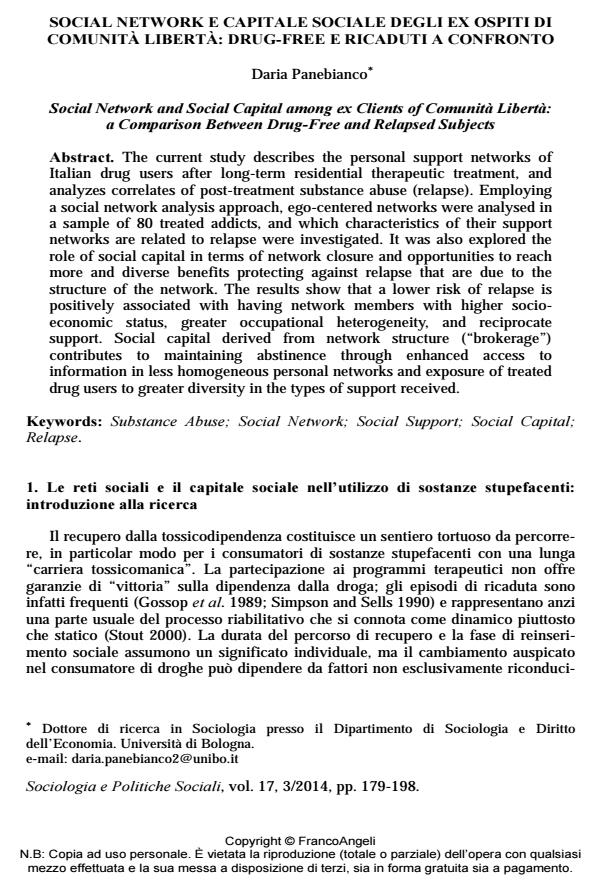Social Network and Social Capital among ex Clients of Comunità Libertà: a Comparison Between Drug-Free and Relapsed Subjects
Journal title SOCIOLOGIA E POLITICHE SOCIALI
Author/s Daria Panebianco
Publishing Year 2015 Issue 2014/3
Language Italian Pages 20 P. 179-198 File size 146 KB
DOI 10.3280/SP2014-003009
DOI is like a bar code for intellectual property: to have more infomation
click here
Below, you can see the article first page
If you want to buy this article in PDF format, you can do it, following the instructions to buy download credits

FrancoAngeli is member of Publishers International Linking Association, Inc (PILA), a not-for-profit association which run the CrossRef service enabling links to and from online scholarly content.
The current study describes the personal support networks of Italian drug users after long-term residential therapeutic treatment, and analyzes correlates of post-treatment substance abuse (relapse). Employing a social network analysis approach, ego-centered networks were analysed in a sample of 80 treated addicts, and which characteristics of their support networks are related to relapse were investigated. It was also explored the role of social capital in terms of network closure and opportunities to reach more and diverse benefits protecting against relapse that are due to the structure of the network. The results show that a lower risk of relapse is positively associated with having network members with higher socioeconomic status, greater occupational heterogeneity, and reciprocate support. Social capital derived from network structure (“brokerage”) contributes to maintaining abstinence through enhanced access to information in less homogeneous personal networks and exposure of treated drug users to greater diversity in the types of support received.
Keywords: Substance Abuse; Social Network; Social Support; Social Capital; Relapse
Daria Panebianco, Social network e capitale sociale degli ex ospiti di Comunità Libertà: drug-free e ricaduti a confronto in "SOCIOLOGIA E POLITICHE SOCIALI" 3/2014, pp 179-198, DOI: 10.3280/SP2014-003009